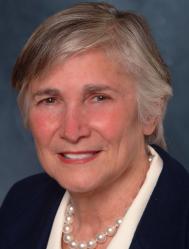The education reform movement that began in the early 1980s must be graded incomplete. Many states increased graduation requirements and raised standards. Enrollments rose in mathematics and science. Despite some improvements, however, academic performance has been mainly flat over the past 25 years and the performance gaps between racial groups remain large. The quest for higher student performance is likely to be stymied by the large proportion of poorly prepared teachers.
POLICY BRIEF #23
A Connecticut editorialist from the last century (no, not Mark Twain) wrote that everybody talks about the weather but nobody does anything about it. When it comes to the schools, almost everyone talks about them and seems to have ideas about how to fix them. Education is an issue for which everyone can claim a certain expertise because they went to school and so did their children or the children of their friends. Educators no longer need to complain about public apathy, for education has beome a national issue of great importance.
At the federal level no president has done more to promote education than President Clinton. In his 1997 State of the Union address, he pledged to improve education and make it the central concern of his remaining years in office. He announced plans to create national reading and mathematics tests and to establish national academic standards. His plan also called for hiring reading tutors, expanding funding to increase enrollments in higher education, and launching a variety of other initiatives.
The Clinton administration moved quickly to develop national testing for individual students, a historic first for the federal government. But only six states have signed up to participate in the national testing program. To gain credibility for the effort, the administration has agreed to turn control of the testing program over to the National Assessment Governing Board, which is the policy board for the National Assessment of Educational Progress.
Congress is ready to meet the president’s request for tax credits and increased aid to reduce the cost of higher education. But expanding access to higher education without dramatically improving the preparation of high school graduates will compound the problems that colleges and universities currently face.
The U.S. Department of Education recently reported that 29 percent of all college freshmen require remedial classes in basic skills. In 1994 at California State University, 47 percent of freshmen arriving directly from high school required remedial mathematics and 41 percent were placed into remedial English programs. What makes these figures particularly striking is that the university accepts only students who have taken a prescribed set of college-preparatory courses and who are from the top one-third of their high school classes.
The current K-12 reform movement began in 1983 when a federal panel, the National Commission on Excellence in Education, issued its report A Nation at Risk. The report recommended that states raise graduation requirements for all students. Now almost fifteen years later, it is time to review the movement’s progress.
The good news is that the standards movement has widespread public support. According to the Public Agenda Foundation, there is near consensus that public schools currently demand too little of their students. Americans believe that schools should set clear academic standards and significantly raise expectations of students performance in all grades. This view is shared by all demographic and ideological groups in the population. Public Agenda also discovered that 88 percent of the public and parents think that students should demonstrate an ability to write and speak English well before being allowed to graduate from high school. Almost as many (82 percent of the public, 86 percent of parents, and 90 percent of African-American parents) believe that schools should set up very clear guidelines on what kids should learn and teachers should teach in every major subject. More than three-quarters of teachers agree that students should not be allowed to graduate without demonstrating the ability to write and speak English well and that again there should be clear guidelines on what kids should learn and teachers teach.
Even students say that schools expect too little from them. A Public Agenda poll of high school students found that 76 percent said they should not be permitted to graduate without a good command of the English language. Three-quarters said they would pay more attention, work harder, and learn more if standards were higher and were consistently enforced. Students admitted that they calibrate their efforts, often meticulously, to do only as much as it takes to get the grade they can live with. Most say that they do only enough to get by. The great majority want higher standards, believe that all youngsters should be held to the same standards, and seem to be calling for adults to take a stand.
The Courses Students Are Taking
The reform movement can claim some major successes. In 1983 the National Commission on Excellence in Education recommended that all students should take a core academic curriculum. This curriculum, called the New Basics, includes four years of English, three years each of mathematics, science, and social studies, and two years of a foreign language for the college bound. Many states responded by raising graduation requirements. From 1982 to 1994 the proportion of high school graduates enrolled in an academic (as opposed to a vocational or general) program grew from 42.5 percent to 68.8 percent. Among high school graduates, the proportion who had studied the New Basics increased from 14 percent in 1982 to 39.1 percent in 1994. The proportion of those who had studied the New Basics and two years of a foreign language grew from 9.2 percent in 1982 to 39 percent in 1994. The number of students taking the college preparatory sequence rose dramatically in all groups (including black and Hispanic students). There were large increases in enrollments in advanced mathematics and science courses. In geometry, for example, enrollment among high school graduates grew during 1982-94 from 45.8 percent to 70.1 percent.
Student Performance
The SAT
Probably the measure of scholastic achievement best known to the public is the SAT. Designed as an aptitude test, the SAT was supposed to be curriculum free so that it would not dictate what was taught by any secondary school. SAT scores reflect the performance of college-bound students, and not all students – about 40 percent of high school graduates – take the test. The decline of SAT scores began in the mid-1960s and hit bottom about 1980. Mathematics scores dropped from a high of 502 in 1963 to a low of 466 in 1980 but by 1995 had bounced back to a solid 482. Verbal scores reached a high of 478 in 1963, dropped to the 420s by the late 1970s, and since then have not recovered.
Over the years researchers have debated the meaning of the decline in SAT scores. Some have concluded that it is solely a reflection of the democratization of American higher education meaning a growing number of minority, low-income, and low-ability students in the test-taking pool. Certainly, changing demographics contributed to the decline, yet something more was happening. Declines occurred at the top of the ability distribution, especially on the verbal part of the test. For example, in 1972 (the first year for which comparable data were available), 116,585 students – 11.4 percent of test takers -scored higher than 600 on the verbal test. By 1983 that number had fallen to only 66,292, or 6.9 percent of the total. Since then the proportion of high-scoring students has remained around 7 percent. By contrast, in mathematics the decline at the top was only temporary. In 1972, 17.9 percent of test takers scored over 600. That proportion dipped as low as 14.4 percent in 1981, but by 1995 it reached 21 percent – the highest proportion of students ever to exceed 600 on the math test.
There is no direct relationship between the movement of the scores and the proportion of test takers from minority backgrounds. Mathematics scores began to rebound even as the pool became more diverse. In 1980 scores reached their lowest point when nearly 20 percent of test-takers were from minority backgrounds. Today, nearly a third of the pool is from minority groups, yet math scores are significantly higher than in 1980. Still, verbal scores, as mentioned above, remain near their lowest point.
In 1996 the College Board recentered the SAT scores, setting new norms based on the performance levels of the 1990s, thus establishing the poor verbal performance of the past twenty-five years as a new norm. One important reason for differential performance in mathematics and verbal areas is that for the past fifteen years students have been taking more advanced courses in mathematics but not in English. Moreover, the field called English is in disarray. It is now called language arts and deemphasizes the importance of mastering standard English. If the national organizations that represent English teachers believe that proper grammar, spelling, syntax and other conventions of language are unimportant (the national standards prepared by the National Council of Teachers of English and the International Reading Association minimize the importance of standard English), then it is not surprising that America’s college-bound students perform poorly on tests of standard English. These pedagogical trends, combined with the omnipresence of visual media, do not encourage mastery of print literacy.
The National Assessment of Educational Progress (NAEP)
NAEP is a federal program that regularly tests national samples to gauge achievement at different age and grade levels. There are two sets of NAEP tests: the long-term trend assessments, which repeat the same questions to measure trends across time, and the main assessments, which change questions periodically to reflect changing educational content and assessment methodology. NAEP scores are reported in two formats: one is proficiency scales, which describe what students know and can do; the other is achievement levels, which rank performance as basic, proficient, or advanced, based on standards of what students should know at each grade level.
The long-term trend assessments allow a comparison of performance in science, math, reading, and writing from the first test to 1996. In almost every area performance over the past quarter century has been flat. In science nine-year-olds made modest gains but the performance of seventeen-year-olds in 1996 was significantly weaker than that of their peers in 1970 (figure 1). In mathematics, assessed since 1973, the achievement of seventeen-year-old students has been flat, but there have been significant improvements for younger students (figure 2).
In reading there have been modest gains for younger students, but the achievement of seventeen-year-olds has been flat since 1971 (figure 3).
In writing, assessed since 1984, few changes occurred other than a decline in the performance of seventeen-year-old students (figure 4).
Long-term trend assessments show:
- the achievement gap between whites and blacks narrowed significantly in math and reading, but not in science and writing;
- the achievement gap favoring seventeen-year-old males in science narrowed significantly;
- the gap favoring males in mathematics is small (only 5 points);
- the gap favoring females in reading and writing is unchanged and large (15 points in reading, 18 points in writing).
In the main assessments, which test national samples of students in a broader array of academic subjects, similar trends appear:
- performance in reading between 1971 and 1994 was up slightly;
- black students registered large gains by 1988, but lost some of those gains between 1988 and 1994;
- in writing, assessed between 1984 and 1994, performance was flat;
- in mathematics, there were significant gains for ages nine and thirteen, but not seventeen, between 1973 and 1996;
- in science, nine-year-olds have improved significantly since 1970, the performance of thirteen-year-olds was flat, and the scores of seventeen-year-olds have declined significantly.
NAEP achievement levels demonstrate how student performance relates to clear standards for different grade levels and specify the proportion of students who are below basic in a given subject.
In reading, the 1994 assessment reported a significant decline among twelfth grade students as compared to 1992 (figure 5).
Declines were greatest among low-performing students. The percentage of students who achieved a basic reading level in the twelfth grade dropped from 80 percent to 70 percent in this two-year period. The proportion of fourth grade students who were below basic rose from 38 percent to 40 percent.
In math the 1996 assessment reported gains over tests given in 1990 and 1992 (figure 6).
The proportion of students who scored below basic declined sharply at every grade level between 1990 and 1996 (in fourth grade from 50 percent to 36 percent, in eighth grade from 48 percent to 38 percent, and in twelfth grade from 42 percent to 31 percent).
In U.S. history, assessed in 1994, an astounding 57 percent of high school seniors registered below basic. Students’ performance weakened as they got older (figure 7).
This suggests that American fourth grade students learn a lot from watching television or reading, since few states or districts offer any history instruction before fifth grade, while high school seniors have usually studied American history in the eighth and eleventh grades.
In geography, a subject that seldom has a secure place in the curriculum, student performance was actually somewhat better than in history, which is taught regularly; 30 percent of students registered below basic (figure 8).
The gaps between racial groups are disturbingly large (figures 9 and 10).
Despite progress in the 1970s and 1980s, the performance of seventeen-year-old black and Hispanic students is on a par with that of thirteen-year-old white students in every subject. The achievement levels tell an equally depressing story. These are sobering figures, especially in light of the probability that the weakest students have left school before the twelfth grade.
International Assessments
The United States has participated in many international assessments in mathematics and science since the 1960s. American students usually perform poorly, whether one looks at the overall sample or only at the most advanced students. Only in an international assessment of reading in 1991 did Americans do well: American nine-year-olds ranked second (after Finnish students) among children from thirty-two nations. Late in 1996 Americans got the first reports from the Third International Math and Science Study (TIMSS), the largest international comparison of achievement and curricula yet conducted. Competing with their peers in forty-one countries, American eighth grade students scored well below the international mean in math and just above the mean in science. Only 5 percent of American eighth graders placed among the top 10 percent in math, and 13 percent in science; by contrast, 34 percent of students in South Korea placed in the top tenth in math and 18 percent in science. In Japan the figures were 32 percent in math and 18 percent in science. American educational leaders blamed low expectations and a curriculum that is too easy.
In mid-1997 TIMSS reported that American nine-year-olds performed well compared to their peers in twenty-five other countries. In science American fourth graders were near the top of the pack, behind Korea and Japan (the American score was not significantly different from the Japanese score for this grade). In math American children placed behind Singapore, Korea, Japan, Hong Kong, the Netherlands, the Czech Republic, and Austria, yet were well above the international mean.
What Happens Now
The international surveys show that the United States spends far more money on education than most other countries. Only Finland spends more per capita. But a 1991 survey by the Organization of Economic Cooperation and Development indicates that the United States does not necessarily spend wisely. Among OECD nations, America alone reported that a majority of its education workers were nonteachers. In Denmark and Finland the nonteaching personnel represented more than 40 percent of all education workers, but in Australia, Belgium, Japan, and France teachers made up 80 percent.
Although there is a popular perception that districts with large proportions of minority students are significantly underfunded, the Department of Education reported in December 1996 that districts with the highest percentage of minority enrollments spend the most on public education. Of course, these districts have large numbers of students with extensive needs, so whatever they are now spending may be inadequate even when it is more than the national mean.
Certainly, the problems of poor youngsters extend far beyond schooling. Yet the job of schools, even under the most difficult circumstances, is to ensure that every student learns the skills and knowledge needed to become part of modern society. This is why so much attention has been devoted to setting meaningful standards so that no matter where they live, students have the same opportunity to study a challenging curriculum.
The American Federation of Teachers (AFT) has evaluated the quality of standards created by the states. Of forty-eight states currently developing academic standards, Virginia was the only one whose grade-by-grade standards in every subject – English, math, science, and history – were recognized as exemplary by the AFT. The organization also praised math standards in Indiana, Ohio, and West Virginia and history standards in California.
Teacher Performance
Without highly qualified teachers in every classroom, even the best standards are meaningless. In 1997 the Department of Education reported that 36 percent of public school teachers of academic subjects had neither an undergraduate major nor minor in their main teaching field. The problem was most acute among social studies teachers, 59 percent of whom were teaching what they had not studied. Other subjects also had large proportions of such teachers: 39.5 percent in science, 34 percent in math, and 25 percent in English. The percentages of unqualified teachers were even higher in private schools. The problem was most acute in schools where more than 40 percent of the students were from low-income families. In these schools 46.7 percent of teachers were teaching outside the field in which they had prepared.
Given the multitude of variables that arise in the running of our schools, public authorities cannot be expected to control all of them. But one for which they have direct responsibility is entry into the teaching profession. States control credentialing of teachers and of teacher-training institutions. Nearly half the states administer some sort of entry test for teaching, but in most it is a test only of basic skills. In the long term we cannot expect flight mechanics to take over for pilots or scrub nurses to fill in for surgeons. Yet in education, unqualified people are regularly permitted to perform tasks for which they are not prepared. It is not surprising that student performance is as uneven and disappointing as it is.
The call for higher standards provides common ground for those who seek excellence and those who seek greater equality. Without constant pressure to strive for excellence, young Americans will not be prepared for the ever increasing demands of a competitive world economy. Without relentless efforts to raise levels of educational achievement among all students, the social inequities in American society will become unbridgeable chasms as economic and technological change advances.
The Brookings Institution is committed to quality, independence, and impact.
We are supported by a diverse array of funders. In line with our values and policies, each Brookings publication represents the sole views of its author(s).



